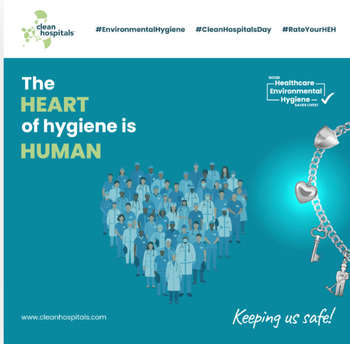
- Infection Control Today, May 2022, (Vol. 26, No. 4)
- Volume 26
- Issue 4
Number of Staff, Not Ownership, Is Predictor of Nursing Home COVID-19 Outcomes
Ratings, ownership, and prior infection control citations of facilities were not consistent outcome indicators.
The Journal of the American Geriatrics Society (AGS) recently published a
The review states that the strongest and most consistent forecasters of COVID-19 outcomes in nursing homes came from larger bed size and a location in an area with high COVID-19 rates. These outcomes included cases and deaths, and they varied by facility racial composition and number of staff members. However, increased number of staff members led to more cases but fewer deaths. Characteristics that did not have consistent correlations with outcomes included Nursing Home Compare 5-star ratings, ownership, and prior infection control citations. The authors included 36 studies of nursing home and ALC attributes in their review.
“We reviewed the evidence on facility- and area-level factors in nursing home COVID-19 cases and deaths (not including the few studies that examined resident-level risk factors),” Tamara Konetzka, PhD, lead author of the report, told Infection Control Today® in a written statement. “We found that the strongest predictors of poor COVID-19 outcomes were facility size (with larger facilities having worse outcomes) and area-level prevalence of COVID-19. In other words, large facilities in COVID-19 hotspots were at high risk even with the best infection control processes. Having more staff could also help somewhat once an outbreak occurred, but staff traffic in and out of a nursing home also presented risk of transmission.”
Because older adults are often frailer, they are more susceptible to the SARS-CoV-2 virus because it is airborne and can be spread asymptomatically. In the nursing home and ALC situations, because of the large number of residents and close proximity to each other and to their caregivers, social distancing is difficult, if not impossible.
Joseph E Gaugler, PhD, professor and Robert L. Kane endowed chair in Long-Term Care and Aging, School of Public Health at the University of Minnesota, concurs. In a written statement to ICT®, he said, “We often fail to recognize that nursing homes are not separate from their communities, but part of them. To this end, were the tragic consequences of the pandemic really about nursing homes failing their residents and families, or was it that an inadequate public health response failed nursing homes?”
Konetzka et al said in the report, “The results of our review have direct implications for policy and practice. The overwhelming importance of community COVID-19 prevalence in predicting long-term care cases and deaths suggests that mitigation policies should not solely focus on facility actions.” All steps to mitigate cases and deaths must start at the state and federal level as ICT® previously
“Although the article by Dr. Konetzka and her colleagues by no means absolves providers of what they did or did not do during the pandemic, the unprecedented nature and massive scope of COVID-19 along with major shortcomings in our nation's overall pandemic response meant that nursing homes were as exposed as the rest of us,” Gaugler wrote to ICT®. “Those nursing homes in the most highly infected communities, unfortunately, bore the brunt of the pandemic's awful consequences above and beyond their capacities to control COVID-19."
However, the lack of effective strategies by the facilities themselves is not staffing. “A large literature links the levels of direct-care staffing to nursing home quality, especially in the case of registered nurse (RN) staffing” the investigators noted in the study. “Staffing may have taken on even greater importance under pandemic conditions, as having adequate staff is a prerequisite for implementing the measures now considered best practices in trying to control an outbreak. The evidence from our review supports a positive (if small/inconsistent) role of staffing in handling an outbreak once it occurred.”
One aspect of the studies that was especially useful was comparing their overall ratings to the cases and deaths in each of the facilities. “Many of the studies (n = 16) directly examined the relationship between the Nursing Home Compare overall 5-Star rating and COVID-19 outcomes,” the investigators reported in the review. “Across the vast majority of these studies, including all but one of the larger studies, using multiple data sources, no practically meaningful or statistically significant relationship was found between the overall 5-Star rating and COVID-19 outcomes.”
Noted limitations of the data in examining resident-level risk factors include reduced time factors and age of the studies. Also, “it will be important in future work to examine resident- and staff-level risk factors in conjunction with facility-level factors,” the authors wrote in the study.
The results of the review “do not exonerate long-term care providers from implementing rigorous infection control practices or imply that there are not concerns regarding care quality, “the investigators noted in the report. “Rather, the evidence suggests a widespread and unique challenge, especially in the face of inadequate supply chains for PPE and rapid testing.”
Due in part to this report, American Health Care Association (AHCA) and National Center for Assisted Living (NCAL) sent a letter requesting meetings with President Joseph Biden, The Department of Health and Services (HHS), and the Centers for Medicare and Medicaid Services (CMS) to discuss the report’s findings and how to proceed for future pandemics according to a press release from AHCA.
Articles in this issue
over 3 years ago
Environmental Measures Disrupt Transmission of HAIsover 3 years ago
Getting Managerial Buy-In for Infection Control EffortsNewsletter
Stay prepared and protected with Infection Control Today's newsletter, delivering essential updates, best practices, and expert insights for infection preventionists.





